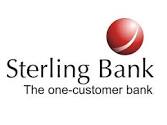
Sterling Bank’s half-year 2025 results are a testament to the bank’s strategic focus and relentless drive to create lasting value for its stakeholders. The bank’s profit-after-tax (PAT) surged by 157% year-on-year to N41.78 billion, driven by robust growth in core income lines and a strategic focus on revenue diversification.
Sterling Bank’s profitability ratios paint a picture of a bank that’s navigating Nigeria’s challenging economic landscape with strategic precision. The bank’s profit margin stands at an impressive 19.6%, calculated from its profit-after-tax (PAT) of N41.78 billion and gross earnings of N212.61 billion. This significant improvement in profitability underscores Sterling Bank’s ability to maintain a tight grip on its finances and optimize its operations for maximum returns.
The bank’s return on assets (ROA) and return on equity (ROE) are estimated at 1.02% and 5.63%, respectively. While these ratios may seem moderate, they demonstrate Sterling Bank’s capacity to generate returns on its assets and equity in a competitive banking environment. With total assets valued at N4.08 trillion and shareholders’ funds estimated at N741.38 billion, Sterling Bank’s financial position appears solid.
This impressive performance is a direct result of the bank’s strategic choices and actions, which have positioned it for success in a dynamic macroeconomic environment.
The bank’s strategic focus on revenue diversification is evident in its 45% increase in non-interest income to N45.45 billion. This growth in non-interest income has helped to reduce the bank’s dependence on interest income and has contributed to its overall profitability. Additionally, the bank’s cost-to-income ratio improved to 64.5%, down from 75.7%, underscoring the impact of ongoing cost optimization measures.
The bank’s strong asset quality is also a result of its strategic focus on prudent risk management. The non-performing loan (NPL) ratio declined to 5.1%, from 5.4% at the close of the 2024 financial year, demonstrating the bank’s ability to manage its loan portfolio effectively.
Sterling Bank’s capital raising programme is another key aspect of its strategic position. The bank’s successful private placement and rights issue raised approximately N100 billion, enabling the full recapitalization of The Alternative Bank and further strengthening the capital base of Sterling Bank. The upcoming public offer will provide the bank with additional funds to drive growth and expansion.
The bank’s commitment to sustainable growth, continuous innovation, and the creation of enduring value for all stakeholders is evident in its ongoing investments in renewable energy, healthcare, and community development. These investments demonstrate the bank’s role as a catalyst for positive change across Nigeria’s critical sectors.
In conclusion, Sterling Bank’s half-year 2025 results demonstrate the bank’s strategic momentum and its ability to deliver superior returns in a dynamic macroeconomic environment. The bank’s strategic focus on revenue diversification, cost optimization, and prudent risk management has positioned it for success and will enable it to drive growth and expansion in the years to come.




